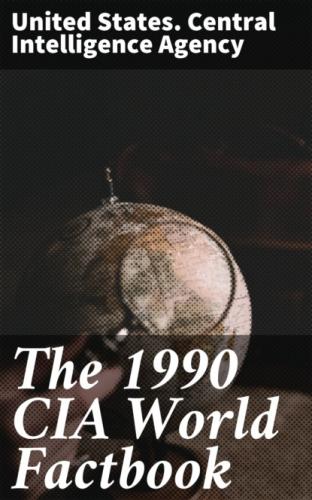Industries: tourism, finance, structural concrete products, paints, pharmaceuticals, ship repairing
Agriculture: accounts for less than 1% of GDP; most basic foods must be imported; produces bananas, vegetables, citrus fruits, flowers, dairy products
Aid: US commitments, including Ex-Im (FY70–81), $34 million; Western (non-US) countries, ODA and OOF bilateral commitments (1970–87), $267 million
Currency: Bermudian dollar (plural—dollars); 1 Bermudian dollar
(Bd$) = 100 cents
Exchange rates: Bermudian dollar (Bd$) per US$1—1.0000 (fixed rate)
Fiscal year: 1 April-31 March
- Communications
Highways: 210 km public roads, all paved (about 400 km of private roads)
Ports: Freeport, Hamilton, St. George
Merchant marine: 93 ships (1,000 GRT or over) totaling 4,163,947 GRT/7,744,319 DWT; includes 2 short-sea passenger, 10 cargo, 4 refrigerated cargo, 5 container, 10 roll-on/roll-off, 27 petroleum, oils, and lubricants (POL) tanker, 4 chemical tanker, 1 combination ore/oil, 10 liquefied gas, 20 bulk; note—a flag of convenience registry
Civil air: 16 major transport aircraft
Airports: 1 with permanent-surface runways 2,440–3,659 m
Telecommunications: modern with fully automatic telephone system; 46,290 telephones; stations—5 AM, 3 FM, 2 TV; 3 submarine cables; 2 Atlantic Ocean INTELSAT earth stations
- Defense Forces
Note: defense is the responsibility of the UK
——————————————————————————
Country: Bhutan
- Geography
Total area: 47,000 km2; land area: 47,000 km2
Comparative area: slightly more than half the size of Indiana
Land boundaries: 1,075 km total; China 470 km, India 605 km
Coastline: none—landlocked
Maritime claims: none—landlocked
Climate: varies; tropical in southern plains; cool winters and hot summers in central valleys; severe winters and cool summers in Himalayas
Terrain: mostly mountainous with some fertile valleys and savanna
Natural resources: timber, hydropower, gypsum, calcium carbide
Land use: 2% arable land; NEGL% permanent crops; 5% meadows and pastures; 70% forest and woodland; 23% other
Environment: violent storms coming down from the Himalayas were the source of the country name which translates as Land of the Thunder Dragon
Note: landlocked; strategic location between China and India; controls several key Himalayan mountain passes
- People
Population: 1,565,969 (July 1990), growth rate 2.0% (1990)
Birth rate: 37 births/1,000 population (1990)
Death rate: 17 deaths/1,000 population (1990)
Net migration rate: 0 migrants/1,000 population (1990)
Infant mortality rate: 137 deaths/1,000 live births (1990)
Life expectancy at birth: 50 years male, 48 years female (1990)
Total fertility rate: 5.0 children born/woman (1990)
Nationality: noun—Bhutanese (sing., pl.); adjective—Bhutanese
Ethnic divisions: 60% Bhote, 25% ethnic Nepalese, 15% indigenous or migrant tribes
Religion: 75% Lamaistic Buddhism, 25% Indian- and Nepalese-influenced
Hinduism
Language: Bhotes speak various Tibetan dialects—most widely spoken dialect is Dzongkha (official); Nepalese speak various Nepalese dialects
Literacy: 5%
Labor force: NA; 95% agriculture, 1% industry and commerce; massive lack of skilled labor (1983)
Organized labor: not permitted
- Government
Long-form name: Kingdom of Bhutan
Type: monarchy; special treaty relationship with India
Capital: Thimphu
Administrative divisions: 3 regions and 1 division*; Central Bhutan,
Eastern Bhutan, Southern Bhutan*, Western Bhutan; note—there may now be 18
districts (dzong, singular and plural) named Bumthang, Chhukha, Chirang,
Daga, Geylegphug, Ha, Lhuntshi, Mongar, Paro, Pemagatsel, Punakha, Samchi,
Samdrup Jongkhar, Shemgang, Tashigang, Thimphu, Tongsa, Wangdiphodrang
Independence: 8 August 1949 (from India)
Constitution: no written constitution or bill of rights
Legal system: based on Indian law and English common law; has not accepted compulsory ICJ jurisdiction
National holiday: National Day (Ugyen Wangchuck became first hereditary king), 17 December (1907)
Executive branch: monarch, chairman of the Royal Advisory Council,
Royal Advisory Council (Lodoi Tsokde), chairman of the Council of Ministers,
Council of Ministers (Lhengye Shungtsog)
Legislative branch: unicameral National Assembly (Tshogdu)
Judicial branch: High Court
Leaders: Chief of State and Head of Government—King Jigme Singye WANGCHUCK (since 24 July 1972)
Political parties: no legal parties
Suffrage: each family has one vote in village-level elections
Elections: no national elections
Communists: no overt Communist presence
Other political or pressure groups: Buddhist clergy, Indian merchant community, ethnic Nepalese organizations
Member of: ADB, Colombo Plan, ESCAP, FAO, G-77, IBRD, IDA, IFAD, IMF, NAM,
SAARC, UNESCO, UPU, UN, WHO
Diplomatic representation: no formal diplomatic relations, although informal contact is maintained between the Bhutanese and US Embassies in New Delhi (India); the Bhutanese mission to the UN in New York has consular jurisdiction in the US
Flag: divided diagonally from the lower hoist side corner; the upper triangle is orange and the lower triangle is red; centered along the dividing line is a large black and white dragon facing away from the hoist side
- Economy Overview: The economy is based on agriculture and forestry, which provide the main livelihood for 90% of the population and account for about 50% of GDP. One of the world's least developed countries, rugged mountains dominate and make the building of roads and other infrastructure difficult and expensive. Bhutan's hydropower potential and its attraction for tourists are its most important natural resources.
GDP: $273 million, per capita $199; real growth rate 6.3% (1988 est.)
Inflation rate (consumer prices): 10% (1989 est.)
Unemployment: NA
Budget: revenues $99 million; expenditures $128 million, including capital expenditures of $65 million (FY89 est.)
Exports: $70.9 million (f.o.b., FY89); commodities—cardamon, gypsum, timber, handicrafts, cement, fruit; partners—India 93%
Imports: $138.3 million (c.i.f., FY89 est.); commodities—fuel
